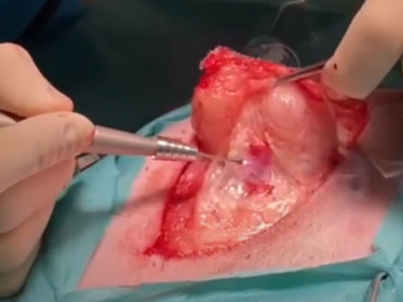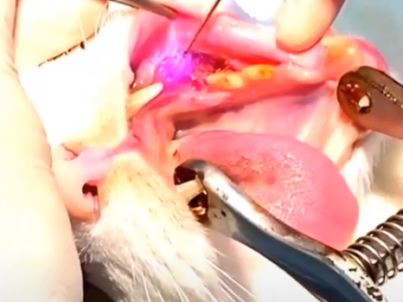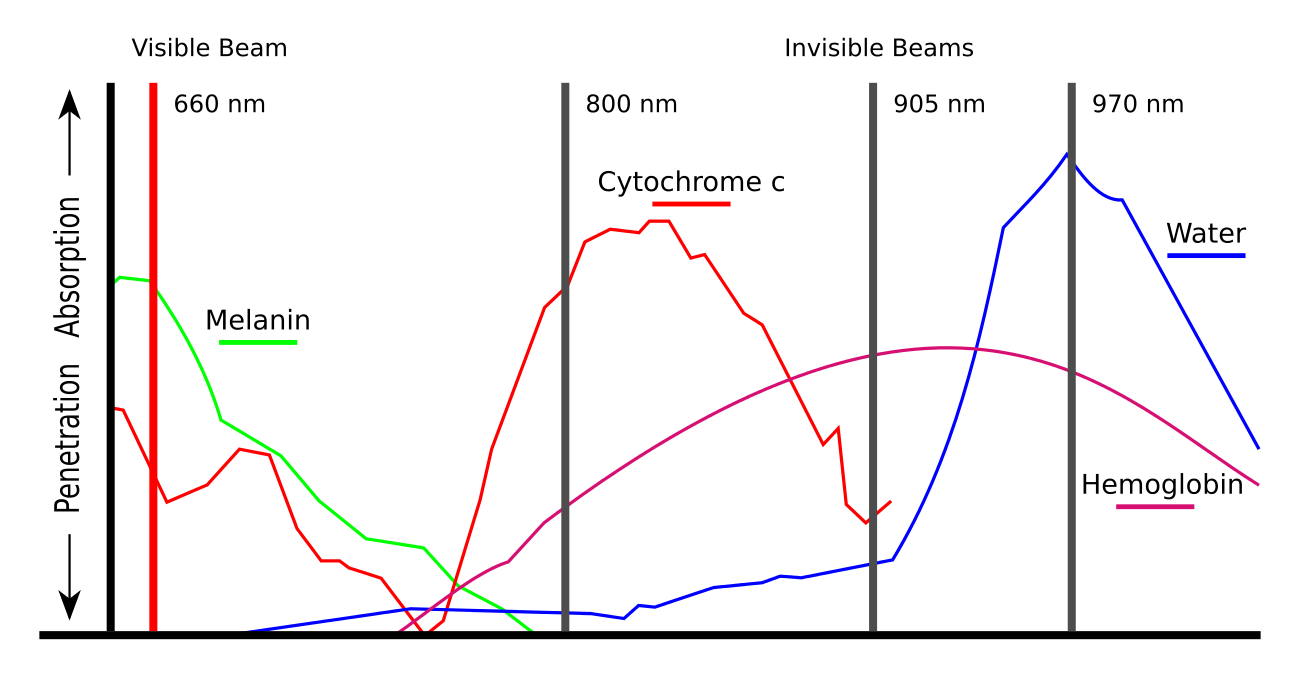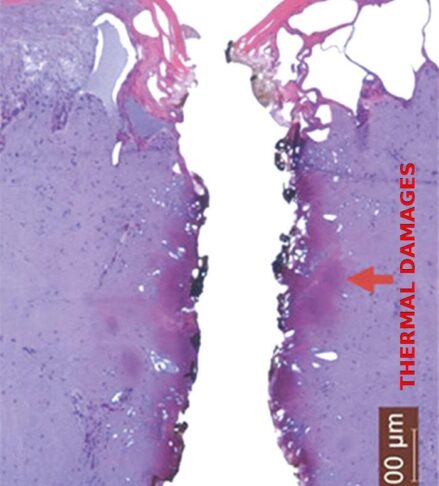Laser Surgery For Veterinary Surgeons
Understand Laser Surgery
Surgical Lasers & Cell Vaporisation
Surgical lasers traditionally target water using infrared wavelengths, causing water molecules to heat up and vaporize, effectively destroying cells and surrounding tissues.
Surgical Diode Lasers Versus CO2 Lasers
Both diode and CO2 lasers target water molecules, but the key difference lies in their wavelengths. Diode lasers use near-infrared wavelengths, while CO2 lasers emit far-infrared wavelengths.
This variation determines how each laser interacts with water chromophores, impacting the precision and efficiency of tissue ablation. CO2 lasers are powerful enough to cut even hard tissues like bone, whereas diode lasers, though still potent, are typically more suited for soft tissue applications.

Laser Surgery & Thermal Damage
Higher power levels in laser surgery result in more aggressive cell vaporization, which leads to greater thermal damage in surrounding tissues. More thermal damage means less precision in cutting, increased inflammation, post-laser edema, and longer recovery times.
VETERINARY APPLICATIONS: This is particularly relevant for delicate surgeries near vital organs, arteries, eyelids, or the soft palate, where post-surgical throat edema poses a high-risk complication.
How to control thermal damage?
1 - Use minimal power: Choose the lowest effective power to achieve the desired cut, avoiding unnecessary tissue damage.
2 - Use pulsed mode: Opt for pulsed laser modes over continuous wave (CW) settings. Pulsed lasers allow tissues to cool between bursts, reducing the accumulation of heat and providing greater control over thermal damage.
K-Laser Surgery & Technology
K-Laser Technology
Pulsing versus Continuous Wave
- Continuous wave (CW): Enables faster cuts but generates more heat damages and post laser edema and inflammation.
- Pulsing mode: Allows tissues to cool between laser bursts, leading to more precise control and less thermal damage—ideal for sensitive procedures, such as eyelid surgery.
Time On | Laser activated - Tissue heating up
Time Off | Resting period - Tissue cooling down
K-LASER surgical units feature both CW and pulsing capabilities, providing versatility for a wide range of procedures.



K-Laser Surgical Handpiece
Veterinary surgeons often require narrow access during surgery, such as in the ear canal or soft palate.
Surgical fibre:
The K-Laser’s surgical fiber narrows down to 400 microns in diameter and extends over 2 meters long. It can be held in a pencil-like handpiece or inserted through an endoscope channel. (over 400microns)
The fiber is designed for easy sterilization and reuse.
K-Laser devices are both surgical lasers and therapeutic lasers
K-Laser devices are versatile, functioning as both surgical lasers and therapeutic lasers.
Veterinary Surgical Laser Applications: Precision for soft tissue dissection, dermatology, ophthalmology, oral surgery, and more.- Click here to watch treatments
Veterinary Therapeutic Laser Applications: From superficial to deep tissue healing, targeting wounds, nerves, joints and more.- Click here to watch treatments
SURGERY WAVELENGTH
970
Laser Surgery
Triggers Cell Vaporisation
Target Water

THERAPY WAVELENGTHS
660nm
Assist Tissue Healing
Superficial tissue
Target Cytochrome C
Melanin Absorption High Obstacle
800
Assist Tissue Healing
Deep Tissue Fair Coat
Target Cytochrome C
Melanin Absorption Medium Obstacle
905
Assist Tissue Healing
Deep Tissue Dark Coat
Target Cytochrome C
Melanin Absorption Low Obstacle
970
Assist Tissue Healing
Deep Tissue Coat
Target Ca2+ Channels
Melanin Absorption Very Low Obstacle


